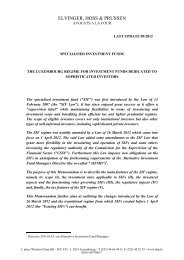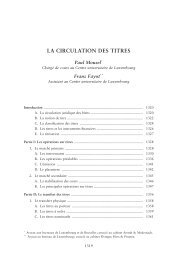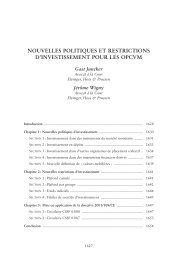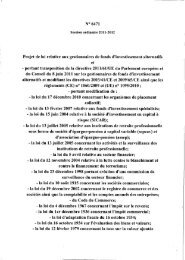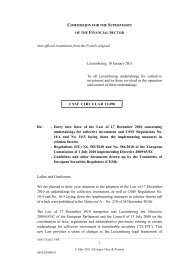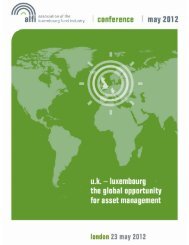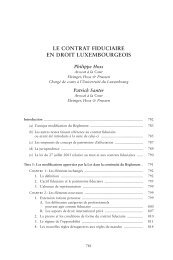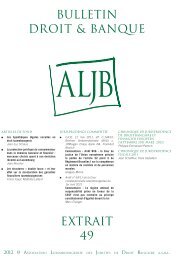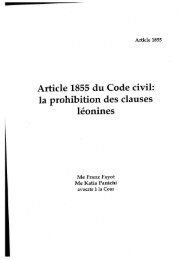1. Introduction - Elvinger, Hoss & Prussen
1. Introduction - Elvinger, Hoss & Prussen
1. Introduction - Elvinger, Hoss & Prussen
- No tags were found...
You also want an ePaper? Increase the reach of your titles
YUMPU automatically turns print PDFs into web optimized ePapers that Google loves.
LUXEMBOURGassets and liabilities to two or more new or existing companies and where shareholdersexchange their shares in the demerged company for shares in the beneficiarycompanies, and spin-offs and split-offs, i.e. transactions where a companytransfers, without being dissolved, part of its assets to a new or existing companyand its shareholders receive shares in the beneficiary company while remainingshareholders of the demerged company, or where the shareholders receive sharesin the beneficiary company in exchange for their shares in the demerged company.From a company law perspective, currently only a true division is possiblefor sociétés anonymes but a Bill of law is currently pending to provide for thepossibility of spin-offs and split-offs (Bill of law no. 4992).In relation to demergers, the law adds a condition for tax neutrality which doesnot apply to mergers. Article 170(3)2 LIR states that the assets transferred to thetransferees, as well as assets retained by the demerged company, have to includeat least an autonomous part of business. An autonomous part of business in thiscontext basically means a business which may operate on its own, independentlyfrom the rest of the undertaking. In the presence of a true division, where thedemerged public limited company disappears as a consequence of the transaction,this condition should a priori always be met, as a public limited companyby virtue of article 14 LIR always carries on a commercial business, which isdeemed transferred in its entirety in the context of the demerger.Four particular cases need nevertheless to be more carefully considered. Thefirst case concerns a holding company which only holds participations or alternativelya company which both operates a business and holds participations andwhere one or more participations are transferred to one of the new companiesresulting from the division without other business assets. The participation ina subsidiary should in our opinion be recognised as an autonomous part of abusiness, in particular if the demerged company was a holding company or ifthe participation represents a separate business of the demerged company. Thetax administration in charge of capital duty has in the past taken the oppositeposition.The second case exists where the assets contributed to one of the new companiesconsist solely of real estate property, in particular where the operating businessis contributed to the other new company. It has been admitted in the past bythe tax administration that in certain circumstances real estate may constitute anautonomous business.A more problematic case exists where only cash is contributed to one of thenew companies, as it is very likely that cash cannot on its own constitute anautonomous business except in case of the transfer of a deposit-taking business.A final particular case arises where solely a trading portfolio of securities issplit off. In circumstances where the recipient company is or becomes authorisedas a professional of the financial sector dealing in securities for its own account,it will have received these initial assets as a business and such a portfolio of securitiesshould be considered as an autonomous part of the business.2.3.7. Transfer pricing rulesIn the case of the sale of a business asset to a non-resident related party, the Luxembourgtax administration may reassess the transfer value of these assets if a446



